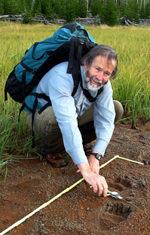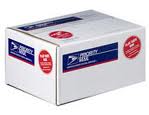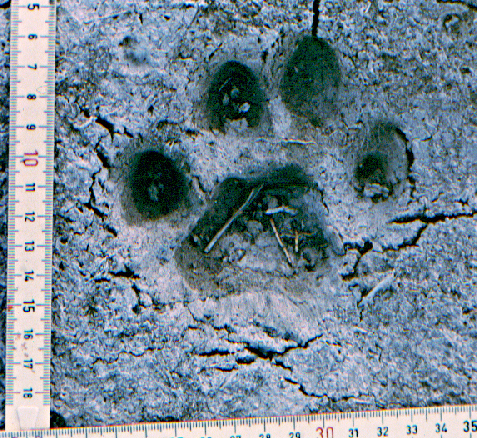E V I D E N C E
Track Scene Investigation

|
Evidence may be submitted to us in the form of digital data, photographic
prints or slides, and casts. |
 |
|
 |
Upon receipt of evidence, we will evaluate its quality and
condition. If the quality and condition do not facilitate accurate analysis, we
will document the evidence and return it to the sender at the sender's
cost. |
|
For all evidence, we prepare copies for our permanent files and our
protection. Usually copies consist of digital images. If the evidence
is a plaster cast, our duplication process uses rubber molds that may cause
the plaster to darken but will not damage the original cast. Casts,
though, may be fragile, especially if the original technique was not
adequate. Therefore we accept no responsibility for breakage.
|
|
Track Plates If the situation allows you to place a track trap, we recommend track plates. Track plates are coated surfaces, usually used with bait and directing walls, to cause an animal to leave a footprint. Track plates provide good records of what animal has passed and are excellent sources for footprint identification. The book Track Plates for Mammals: A How To Manual and Aid to Footprint Identification provides detail information about the various types of track plates and how to use them. Click on the icon to the left to purchase a copy of Track Plates for Mammals |
|
Quality Tracker The Tracker: As a Naturalist, Scientist, Practitioner, and Teacher deals with how the evolution of tracking, since its inception, affects the role of quality in everything the tracker does. The tracker provides a thought provoking look at what it means to be a tracker. Click on the icon to the left to view the Quality Tracker PDF |
|
Minimum Outline How Big Is That Track deals with the correct way to measure a footprint so resulting information will be reduced in variability and be as accurate as possible. For footprint data to be useful for biology, ecology, behavior, or legal evidence, tracks must be measured using minimum outline techniques. Click on the icon to the left to view the Minimum Outline PDF |
|
Casts Making Casts of Footprints is a step-by-step procedure for plaster casting of tracks. Information is provided on how to make casts in snow, sand, and fine dirt. This article contains information on supplies, equipment, procedures and retailers. Click on the icon to the left to view the Casting PDF |
|
|
Forensic wildlife tracking is relatively new and the collections at the
Track Museum and Education Center represent one of the more extensive available. We continually seek to improve the collections and our abilities to teach
using these reference materials.
|
|
 |
For legal cases, we prepare copies of materials sent to TSI and keep these as permanent references. In respect for the need of confidentiality, legal cases evidence is not available to the public. Evidence will not be used for teaching purposes unless permission is granted (see above) and a delayed time frame may be specified before material is used for teaching. |
 |
Chain of Custody or Chain of Evidence We request that any material needing a chain of custody be sent via signature required transportation through USPS, Fed Ex, or UPS. We will keep all sealing, marking, and chain of evidence documentation in order, record its process at TSI, and return with the evidence and any reports. You may download our chain of custody record form for your use in transmitting evidence to TSI by clicking here. |
